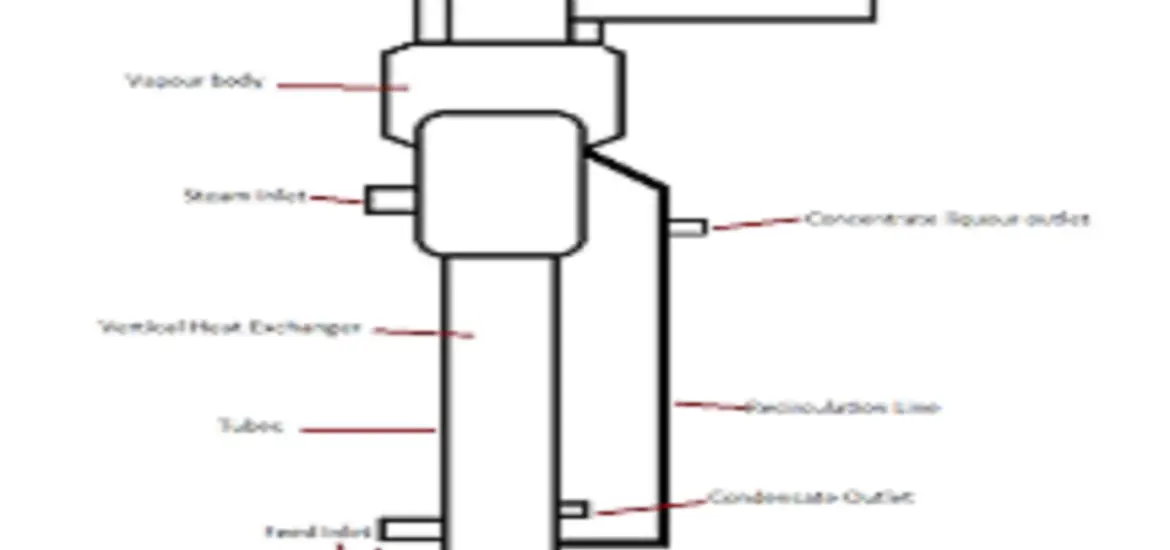Evaporator inlet and outlet temperature plays a crucial role in the efficiency of your evaporator system. But why is it so important, and how can you optimize it? Let’s dive right in!

Table of Contents
Introduction to Evaporators
So, what exactly are evaporators, and why do we need them? They’re used in a variety of industries from food processing to wastewater treatment. Evaporators help remove moisture and concentrate solutions, making them invaluable for countless applications. There are various types of evaporators, like falling film, rising film, and forced circulation, each with its unique set of advantages.
Evaporator Components
Evaporators have several key components, including heat exchangers, vapor separators, vacuum pumps, and condensers. These elements work together in harmony to ensure efficient evaporation and optimal performance.
Read more about evaporators here – – Evaporators in Refrigeration: Easy Guide to Understanding Your Fridge’s Unsung Hero
Importance of Inlet and Outlet Temperature
But why do we care so much about inlet and outlet temperatures? Temperature difference plays a significant role in heat transfer, affecting the evaporator’s efficiency and performance. When temperatures aren’t in the optimal range, your evaporator might struggle, leading to potential consequences like reduced production rates and increased energy consumption.
Temperature Control in Evaporators
Proper temperature control is crucial for maintaining peak performance. By keeping an eye on the inlet and outlet temperatures, you can avoid potential issues and ensure a smooth, efficient operation.
Measuring Evaporator Inlet and Outlet Temperature
How do you measure these temperatures? Temperature sensors, such as thermocouples and resistance temperature detectors (RTDs), can be strategically placed in the evaporator system. These sensors provide real-time data to help you monitor and analyze the temperatures.
Data Collection and Analysis
Temperature monitoring systems can log and analyze the data for process optimization. This information is invaluable when it comes to identifying issues and optimizing your evaporator’s performance.
Factors Affecting Inlet and Outlet Temperature
Several factors can impact your evaporator’s inlet and outlet temperatures, including feed temperature, heat transfer surface area, and evaporator pressure. By understanding these factors, you can better control and optimize your system.
Feed Temperature
The temperature of the incoming feed can significantly affect the inlet and outlet temperatures. Methods for controlling feed temperature include preheating or cooling the feed, depending on the desired outcome.
Heat Transfer Surface Area
The heat transfer surface area also plays a role in temperature control. Keeping surfaces clean and well-maintained is essential for optimizing heat transfer and maintaining proper temperature levels.
Evaporator Pressure
Pressure and temperature are closely related in evaporator systems. Pressure control techniques can help maintain optimal inlet and outlet temperatures, ensuring smooth operation.
Troubleshooting and Optimization of Inlet and Outlet Temperature
When temperature issues arise, like high or low inlet and outlet temperatures, it’s essential to identify the causes and implement potential solutions. Process optimization techniques can help you save energy, reduce costs, and increase your evaporator’s efficiency and performance.
Common Temperature Issues
Issues with high or low inlet and outlet temperatures can stem from various sources, such as faulty sensors or inadequate heat transfer. By identifying and addressing these problems, you can get your evaporator back on track and operating efficiently.
Process Optimization Techniques
Optimizing your evaporator system involves various strategies, such as improving heat transfer, adjusting pressure levels, and fine-tuning feed temperature. These measures can lead to energy and cost savings while ensuring your evaporator’s performance is at its peak.
Conclusion
In conclusion, understanding the importance of evaporator inlet and outlet temperature is crucial for maintaining optimal temperature conditions and ensuring efficient operation. By monitoring temperatures, addressing potential issues, and implementing optimization techniques, you can keep your evaporator system running smoothly and effectively. So, keep an eye on those temperatures, and you’ll be well on your way to mastering the essentials for evaporator efficiency!